Everything you need to know about all the different types of sugar used in baking and cooking to help you understand which sugar is best for your specific needs! This is a comprehensive guide with detailed information on how to substitute different types of sugar and the type of recipes that call for each type of sugar.
A comprehensive guide to different types of sugar used in baking and cooking!
White sugar types
Granulated sugar
This is the standard type of white sugar available in stores. It’s the most common type of sugar that is called for in recipes for baking and/or cooking such as this classic vanilla cake or honeycomb toffee for example.
The sugar has small granules that do not cake together, and it measures evenly in cups and does not compact in measuring cups.
Also known as,
- Table sugar
- White sugar
- Refined sugar
Substitutes for granulated sugar
Since this is the most common type of sugar available, it’s easy to find in a pinch.
However, you can use caster sugar as a substitute at a 1:1 ratio BY WEIGHT (NOT volume). In some recipes (not all) you can use light brown sugar, but this will alter the flavor and texture if sugar is one of the main ingredients.
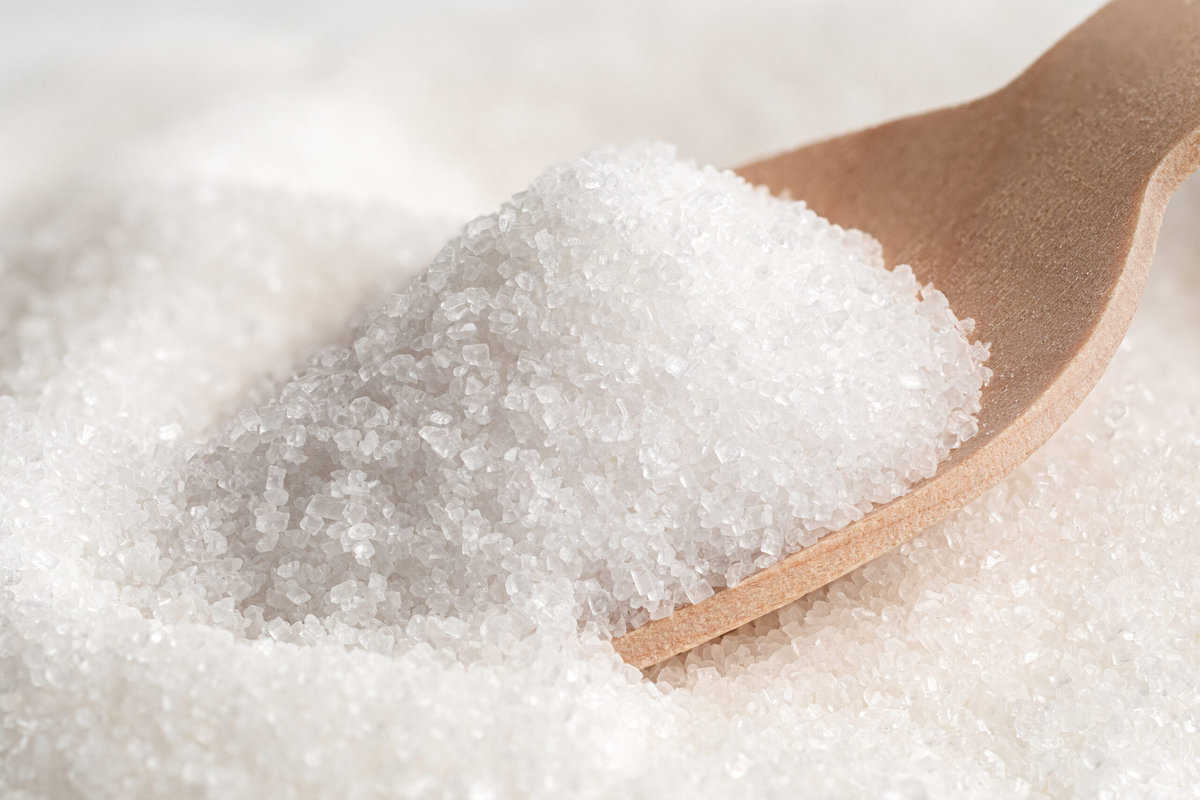
Caster sugar
Caster sugar is extra fine sugar. This type of sugar has very fine granules compared to regular granulated sugar. This sugar can also be used in baking and cooking.
This sugar is preferred in recipes where the sugar must dissolve easily and quickly – such as meringue based desserts like this pavlova recipe. It’s also great for cocktails or other cold drinks where you want the sugar to dissolve easily.
Also known as,
- Extra fine sugar
- Superfine sugar
- Ultrafine sugar
- Bar sugar
- Fruit sugar
Substitutes for caster sugar
Due to the finer granules, more sugar can fit into measuring cups. Therefore, if you’re using caster sugar as a substitute for granulated sugar, make sure to weigh the sugar in grams at a 1:1 ratio (and don’t go by volume).
If you don’t have caster sugar, and only have granulated sugar, you can blitz the granulated sugar in a blender or food processor for a few minutes to make the granules finer. However, if you pulse it too much, it’ll become powdered sugar / confectioner’s sugar.
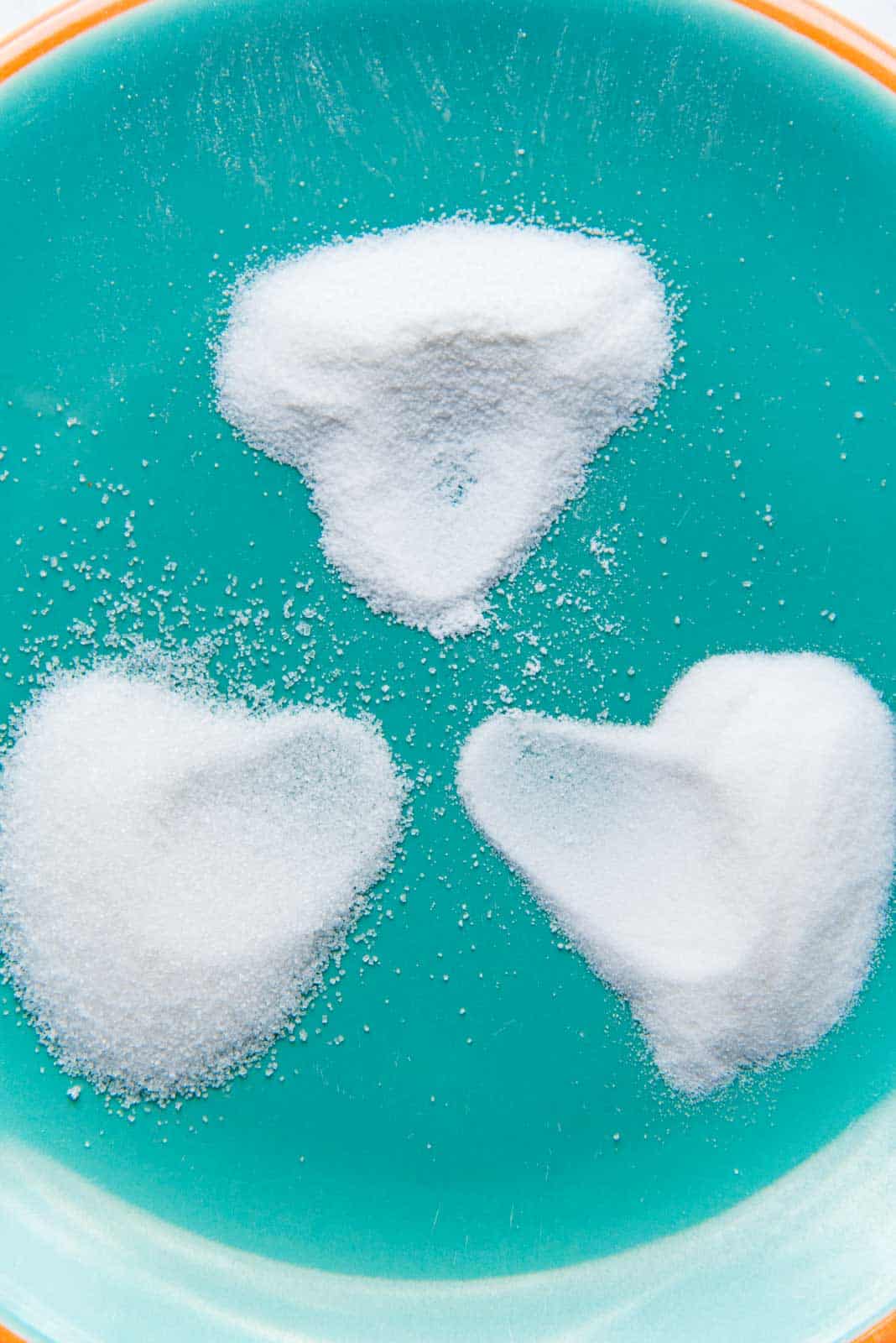
Confectioner’s sugar
This is also known as powdered sugar, because it’s granulated sugar in powdered form. It’s very fine in texture, and dissolves instantly.
However, due to the powdered / fine texture of the sugar, some confectioner’s sugar has added cornstarch (about 3%) as an anti-caking ingredient to prevent clumping.
But it is possible to find confectioner’s sugar without added cornstarch as well.
This sugar type is perfect for frostings and glazes such as this classic vanilla buttercream, cream cheese frosting, chantilly cream used to fill these cream puffs and choux au craquelin with, and the eggnog glaze in this eggnog pound cake, where the sugar must completely dissolve for a smooth, silky texture.
It’s also used as a decoration / sweetener for dusting on top of pastries, doughnuts, and other sweet treats such as these Mexican wedding cookies, linzer cookies, pumpkin roll cake, bostock pastry etc.
Also known as,
- Icing sugar
- Powdered sugar
- Fondant sugar
- Fondant powder
Substitutes for confectioner’s sugar
Place granulated sugar or caster sugar in a blender with a little cornstarch. Blend for a few minutes until the sugar is finely powdered.
Sift the sugar to remove any large granules and use this as a substitute in any recipes that call for confectioner’s sugar.
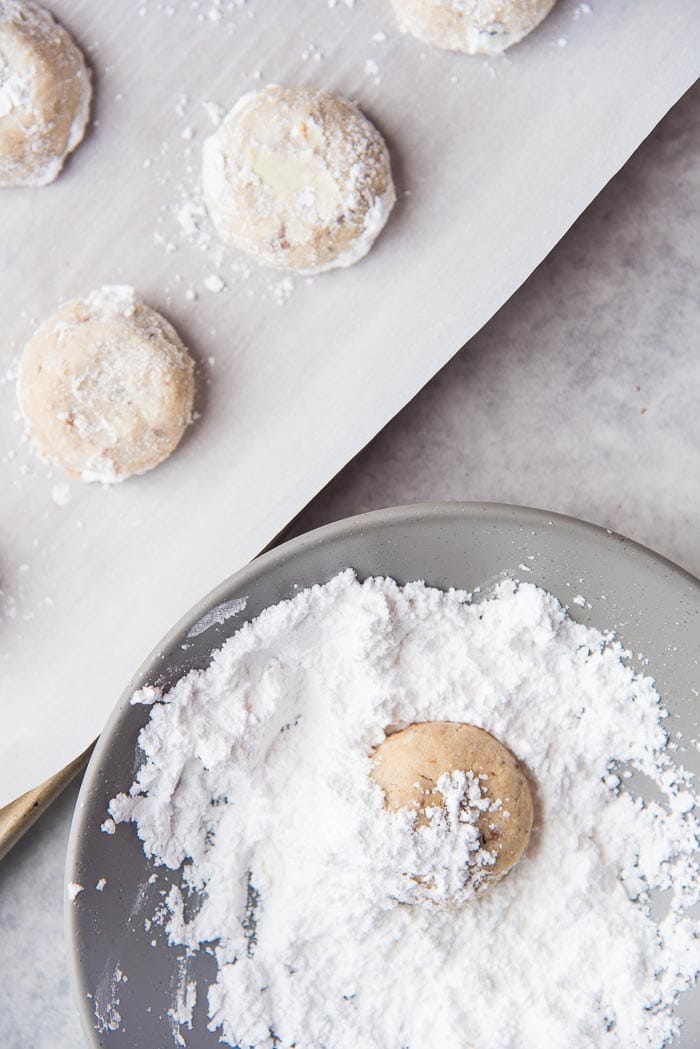
Pearl sugar
Pearl sugar is large granules of sugar. Regular granulated sugar is compressed to make dense, large sugar granules that do not dissolve easily.
They come in two sizes usually, small and large pearl sugar crystals. These are used in baking, where you do not want the sugar to melt.
Very popular in Scandinavian and some French baked goods where pearl sugar is used as a crunchy topping on pastries and breads. I have used these on top of brioche bread, as well as choux pastry (to make chouquettes). These are also a classic addition to liege waffles.
There are unfortunately no substitutes for pearl sugar, as other sugars will dissolve while being baked / cooked.
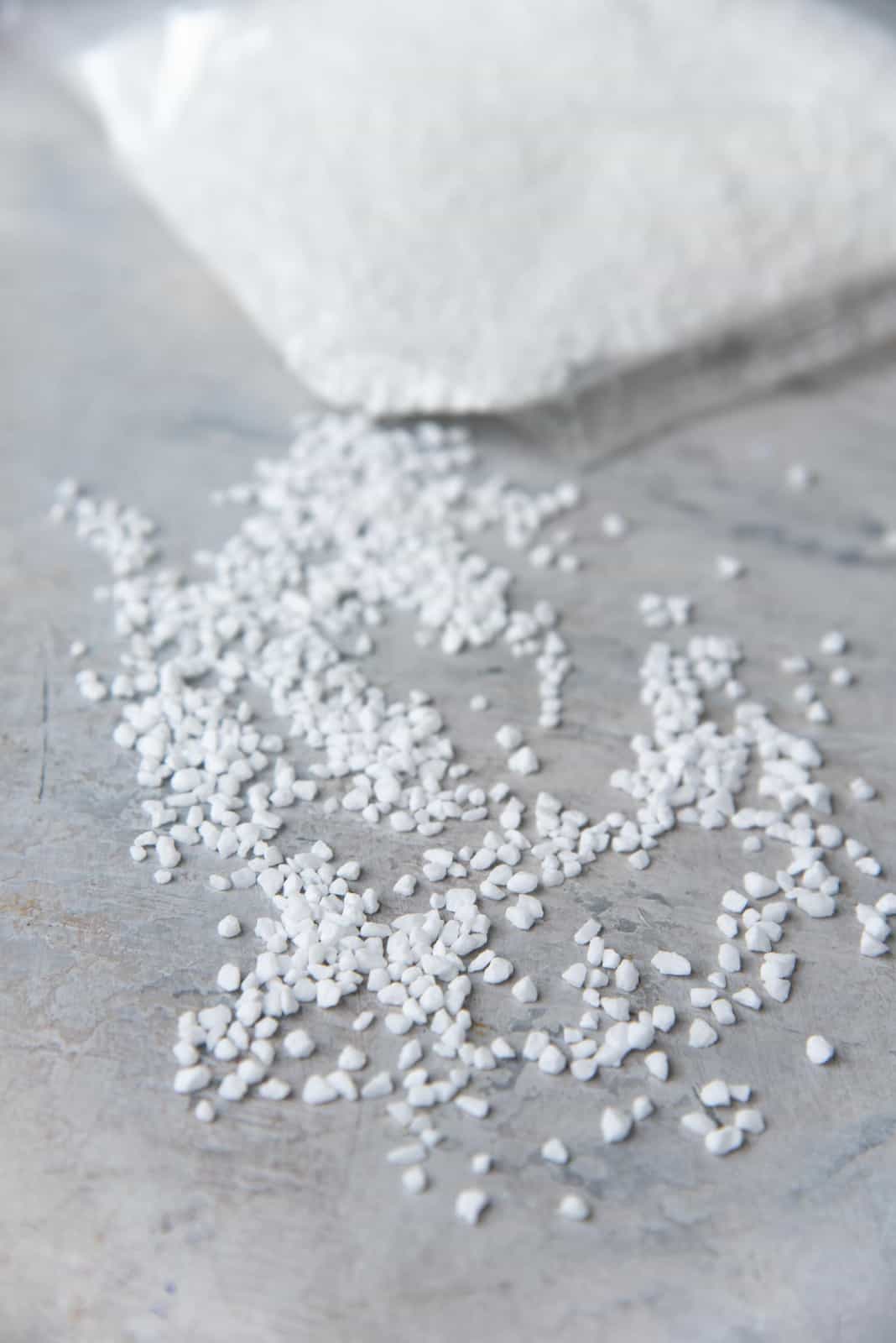
Rock sugar
Rock sugar is very large pieces of crystallized sugar. Usually, this is sold as a candy in Western parts of the world. However, in East, South East and South Asian cooking, you can purchase rock sugar that is used for cooking, in packets/sachets.
You can find rock sugar that is white / clear or amber colored, made with unrefined sugar. Not to be confused with jaggery, these rock sugar crystals are compressed into large granules, as opposed to being molded into shapes like jaggery.
Also known as,
Substitutes for rock sugar
Rock sugar can be made at home, but can also be bought at specialty stores (Asian grocery shops). In a recipe, you can absolutely use white sugar or brown sugar as a substitute, since rock sugar is usually dissolved to be used in recipes.
Unrefined sugar types
Brown sugars (types of brown sugar)
Brown sugar comes in two types that are widely available in supermarkets. Named after their color; they are light brown sugar and dark brown sugar.
Light brown sugar
Light brown sugar is refined white sugar, with some added molasses. The result is lightly golden brown sugar that has some moisture, and is a little stickier than granulated white sugar. The added molasses introduces a caramel / butterscotch-like flavor to the sugar.
Dark brown sugar
Dark brown sugar is refined white sugar with more molasses added to it. Due to the higher molasses content, the sugar has a darker brown color and is more moist and sticky than light brown sugar and white granulated sugar.
Dark brown sugar has a deeper caramel / butterscotch / molassey flavor that adds more depth of flavor to recipes like this blondies recipe, banana layer cake, fudgy chocolate brownies, chocolate chip cookies etc.
While white sugar only adds sweetness, brown sugar adds sweetness and more nuanced flavor due to the molasses. The higher the molasses content, the more pronounced the flavor.
Also known as,
- Golden sugar (light brown sugar)
- Soft sugar
Substitutes for brown sugar
You can mix white sugar and molasses to get brown sugar. For every cup or 200 g granulated white sugar, mix 1 – 2 tbsp of molasses. If you want light brown sugar, add less molasses, and for dark brown sugar, add more molasses.
Other substitutes for brown sugar include demerara sugar, muscavado sugar, turbinado sugar, and coconut sugar. These can be useful substitutes, but do keep in mind that coconut sugar and muscavado sugar have a different flavor profile than brown sugar.
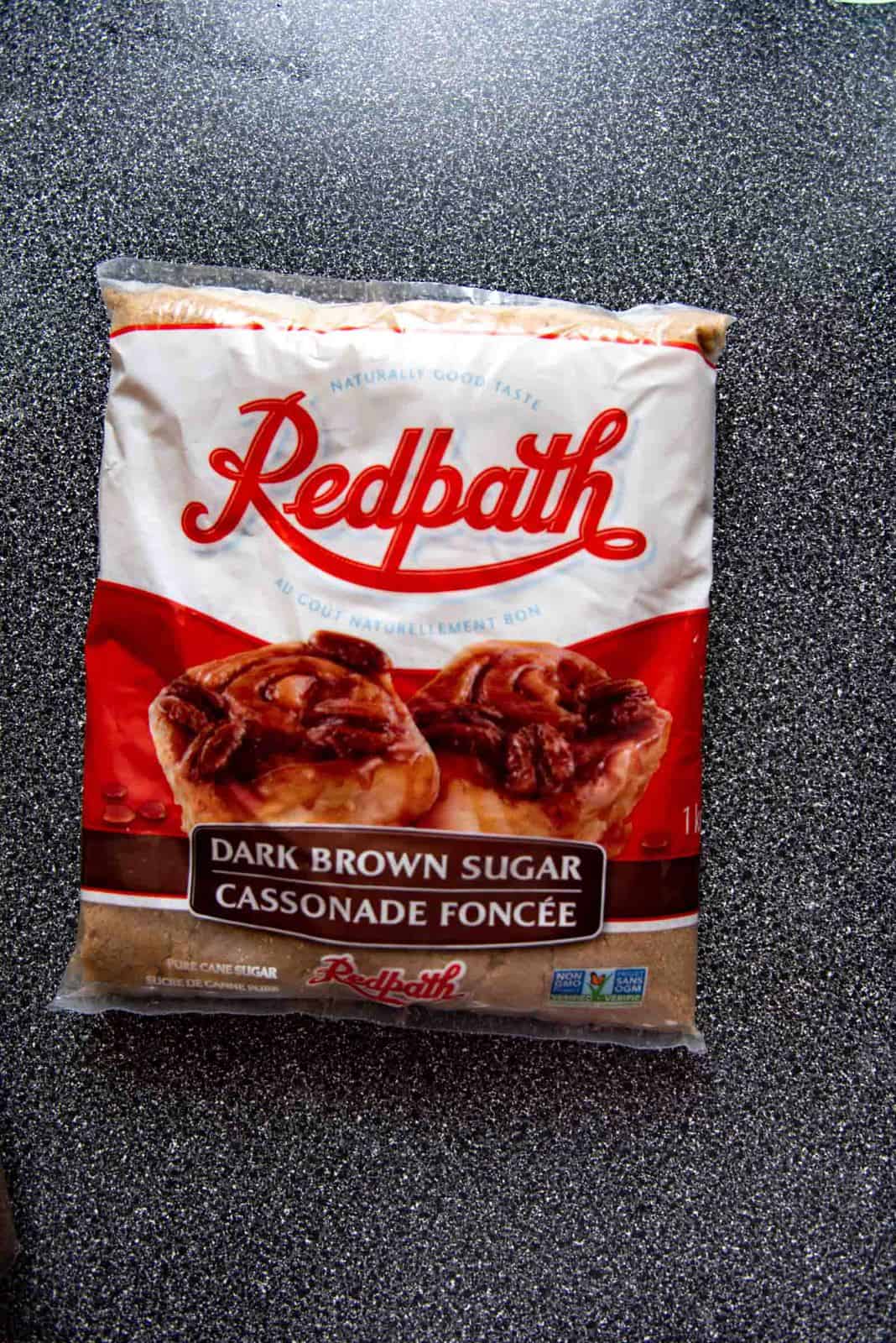
Organic cane sugar
Cane sugar can also be very similar to white sugar in color, taste, and feel. Some white sugars are made from beet, but if the package specifies “cane” sugar, then it’s from sugar cane. The off-white color in sugar is the result of unrefined cane sugar that has been filtered with natural, organic ingredients.
Substitutes for organic cane sugar
Granulated white sugar can be used in place of cane sugar in any recipe for any purpose.
If organic sugar is required for a particular recipe (making kombucha for example), then another organic sugar will work in its place. However, if you do use brown sugar, remember that the flavor of molasses will also be present.
Demerara sugar
Demerara sugar is just like light brown sugar, but with larger crystals. A little sticky due to the addition of molasses. It’s great to be used as a sprinkling on top of different items like oats, scones (like these cream scones), and muffins (like this basic muffins recipe). It’s also used in beverages and adds a sweet molassy, toffee-like flavor!
Also known as,
- Brown sugar
Substitutes for demerara sugar
A good substitute for demerara sugar is light brown sugar, or white sugar mixed with a little molasses.
Turbinado sugar
A semi-refined sugar. The sugar has larger granules that are golden in color. This sugar is made from a single crystallization process, or from the first pressing of the sugar crystallization. Since this sugar is less processed, it contains more of the natural molasses of sugar. It’s perfect to be sprinkled on top of baked goods, but also great for sweetening coffee or tea as well.
Also known as,
- Raw sugar (“In The Raw” sugar brand)
- Brown sugar
- Coffee sugar
Substitutes for turbinado sugar
You can use light brown sugar or golden sugar instead of turbinado sugar. Demerara is also an excellent substitute.
Turbinado sugar can also be used in place of white sugar in recipes, but there will be the addition of molasses flavor.
Muscavado
This sugar is produced during the early stages of the sugar making process. Therefore it’s less refined, and has more color and molassey flavor. This is less refined than turbinado, and is darker in color.
Muscavado sugar can also be sticky, similar to brown sugar, but usually has a deeper flavor than dark brown sugar. However muscavado sugar can come in a lighter color than dark brown sugar as well.
This is my favorite type of sugar to use as a substitute for jaggery in South Asian cooking and baking.
Also known as,
- Barbados sugar
- Raw sugar
Substitutes for muscavado sugar
Brown sugar (the flavor can be less molassey than muscavado sugar though).
South Asian jaggery (it will need to be grated or finely chopped to dissolve easily).
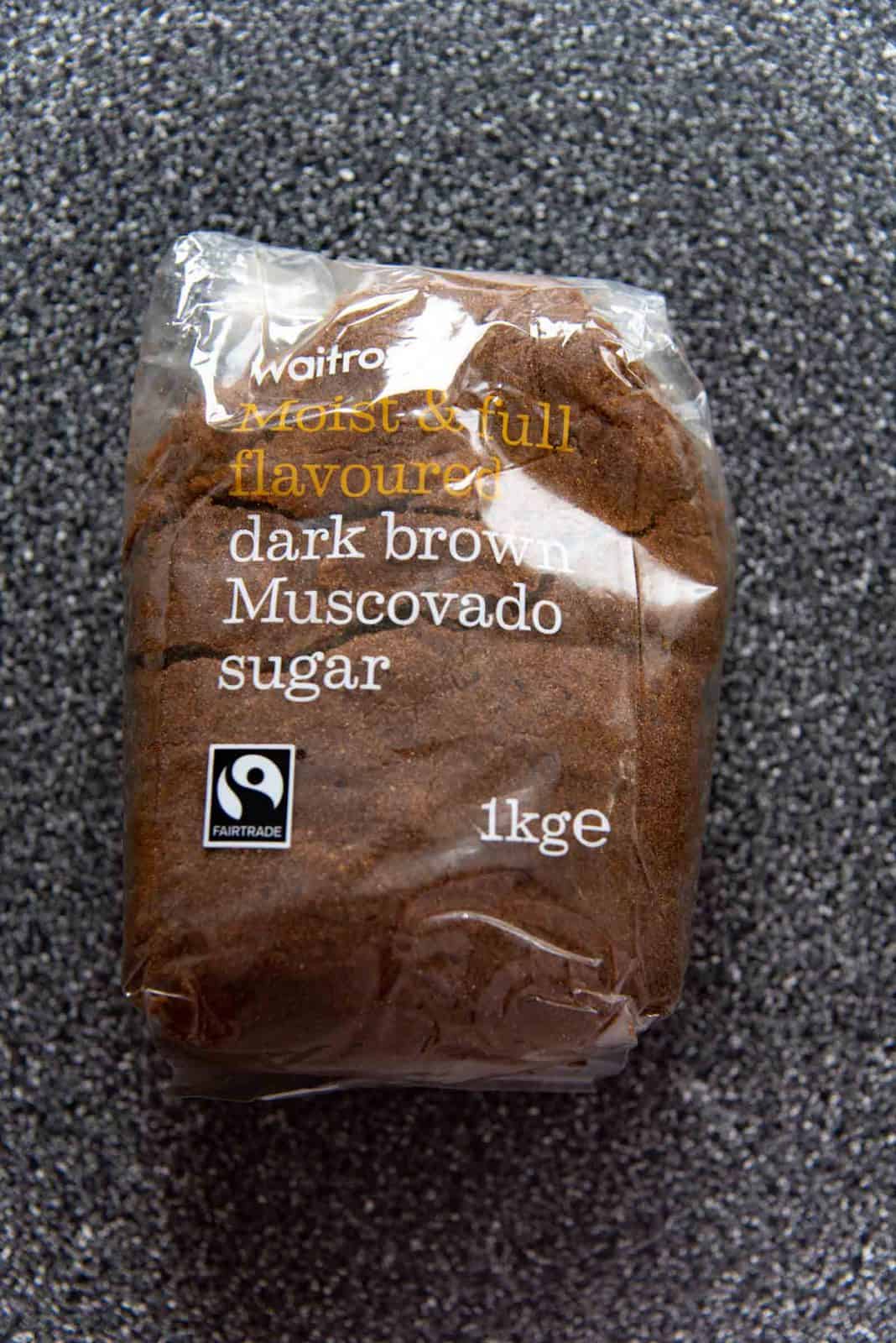
Jaggery
Jaggery is traditional raw sugar that is prepared before sugar is refined. The sugar syrup is evaporated (naturally or through heat), until raw sugar is formed, and this is pressed into molds or slabs to make jaggery.
The raw sugar that is left behind is mostly sucrose and invert sugars, but also contains some moisture, minerals, and other insoluble substances. The sugar syrup can come from sugar cane, sugar beets, or even palm trees to form palm treacle.
Also known as,
- Hakuru in Sri Lanka (in Sinhalese. Typically this is jaggery made from palmyrah palm trees)
- Gul in some places in India
- Vellum or Sakkarai in South India and Sri Lanka (in Tamil)
- Gula mekala in Malay
- Panela in Central and Latin America
Substitutes for jaggery
There are substitutes for jaggery in different parts of the world. Named above are the different forms that jaggery come in, in different parts of the world. The other closest substitute is dark muscavado sugar. My Sri Lankan watalappan recipe is an example of a classic custard recipe that uses jaggery.
Liquid sugars (types of liquid sugar)
Molasses
Usually a dark colored thick syrup. It’s a by-product of the sugar refining process. The sugar syrup in the sugar making process is the first step. Usually this is crushed sugar cane juice (from sugar cane). This juice is boiled until the water is evaporated, concentrating the minerals in the liquid. The sucrose is crystallized into raw sugar, while other sugar molecules (glucose, fructose) and sodium concentrate in the liquid.
The different stages of molasses are produced during this refining stage. Molasses come in different forms – fancy molasses and blackstrap molasses.
Cane syrup
The first boiling of the cane sugar juice produces the sweetest type of molasses, which is also known as cane syrup. Lighter in color than true molasses. It is still colorless and has the highest sugar content as there is little to no crystallization.
True molasses
The second boiling produces what is known as “true molasses”, and is also very sweet, but with a little bitterness. This is what is sold as fancy molasses in some parts of the world and is predominantly used in baking, in recipes such as gingerbread (like this gingerbread cake and gingerbread house recipe).
It is also known as dark molasses, fancy molasses, or table molasses. Black treacle is similar to true molasses.
Blackstrap molasses
The third boiling is when most of the sugar has crystallized as raw sugar, and you’re left with a thick, dark liquid. Due to having no sugar, and instead having concentrated minerals and sodium content, blackstrap molasses is bitter and salty.
When recipes call for molasses, never use blackstrap molasses. This doesn’t have the pleasant sweetness of true molasses and will result in baked goods that taste pretty awful.
Unless a recipe specifically calls for blackstrap molasses, I recommend you do not use this instead of true molasses!
Liquid invert sugar
Invert sugar syrup is usually a syrup consisting of fructose and glucose. Both fructose and glucose combine to produce sucrose. However in invert sugar syrup, sucrose is split into fructose and glucose through hydrolysis (during the cooking process with water). Hence it’s called inverted sugar syrup.
This solution has a low risk of re-crystallizing at saturated concentrations, and is used in candy making to prevent sugar syrups from re-crystallizing. I use corn syrup in my marshmallows recipe, and golden syrup in my honeycomb recipe to prevent recrystallization.
Also known as,
- Invert syrup
- Invert sugar
- Trimoline
- Glucose syrup
- Corn syrup
- Honey and golden syrup are also considered to be invert sugar syrups.
Golden syrup
Amber colored thick syrup that is made during the process of making sugar. It can also be made by making sugar syrup with an acid added to the boiling process. This is an invert sugar syrup as well.
Golden syrup has a distinct flavor that is different from molasses. It can also be made at home, by making a sugar syrup with added lemon juice.
Also known as,
- Light treacle
Substitutes for golden syrup
The substitutes will change depending on where and how you’re using golden syrup. If you’re using golden syrup as an invert sugar syrup (in candy making), you can use glucose syrup / corn syrup or honey in place of golden syrup.
If you’re using golden syrup as a topping, then maple syrup or honey are good substitutes.
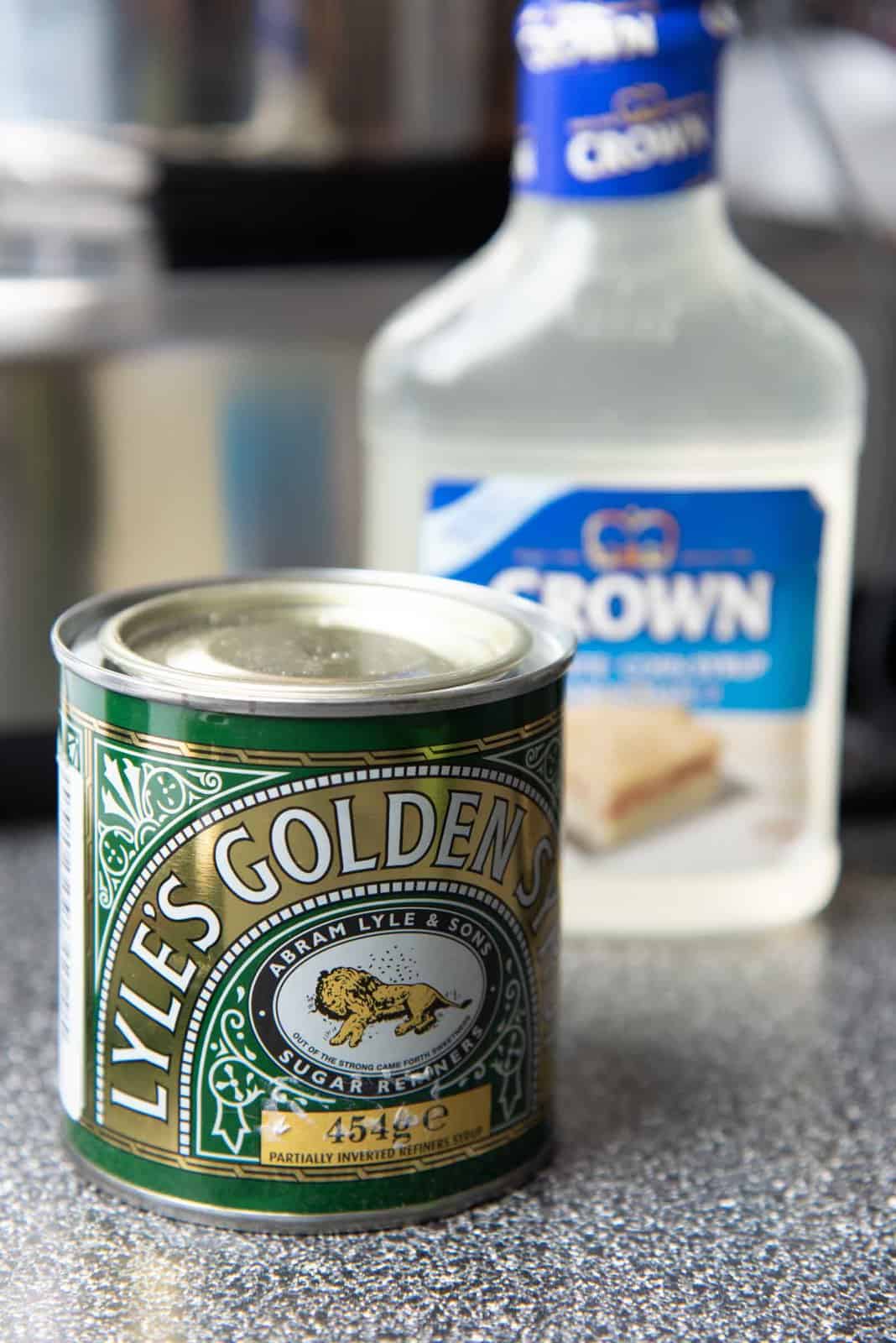
Honey
Honey, as you know, is a sugar syrup made by harvesting bee hives. Bees (specifically, honey bees) are responsible for collecting nectar from flowers and refining it and storing it as honey in bee hives to nourish their colony.
The honey is later extracted from the hives and processed to make it safe for human consumption (though raw honey is also available in the market). The water content of honey should be a maximum of 18%, and therefore should have an indefinite shelf life.
Due to the presence of invert sugar in honey, honey is less likely to crystallize. Different types of honey can have varied flavor profiles depending on where the nectar was collected by the bees, and the blend of honey from multiple colonies.
Substitutes for honey
Honey has a distinct flavor, so if you’re looking for a substitute for sweetness + flavor, you can use maple syrup, golden syrup, or sugar syrup made with brown sugar.
Maple syrup
Maple syrup is made from the tree sap of the maple tree. It was first made by indigenous people of North America, and is now widely regarded as a distinctly Canadian product.
Maple trees store starch in the tree trunks that is converted into sugar. Holes are drilled into the tree trunks to collect the sap from the tree trunk. This sap is then processed and boiled so that the water evaporates and the sugar content concentrates. This creates maple syrup.
Now you can find maple butter or maple sugar in the market as well. Having moved to Canada, I have ready access to amazing maple syrup now and I love using it in recipes like these maple roasted brussels sprouts, butter pecan cake, pumpkin pancakes with maple pecan topping etc.
Substitutes for maple syrup
You can use honey or golden syrup as a substitute for maple syrup.
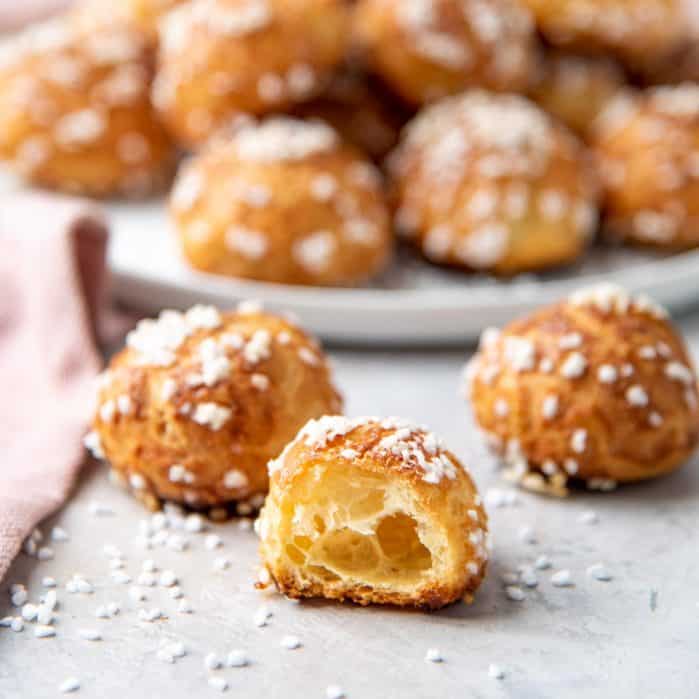
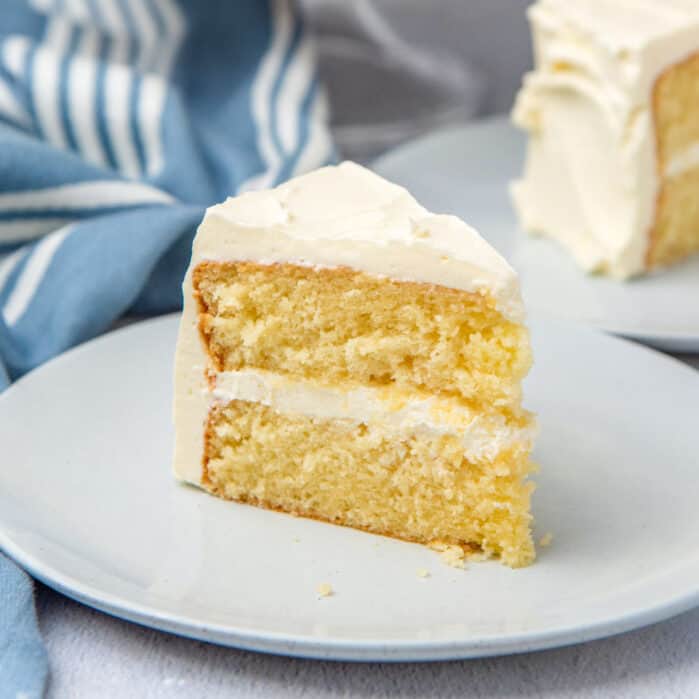
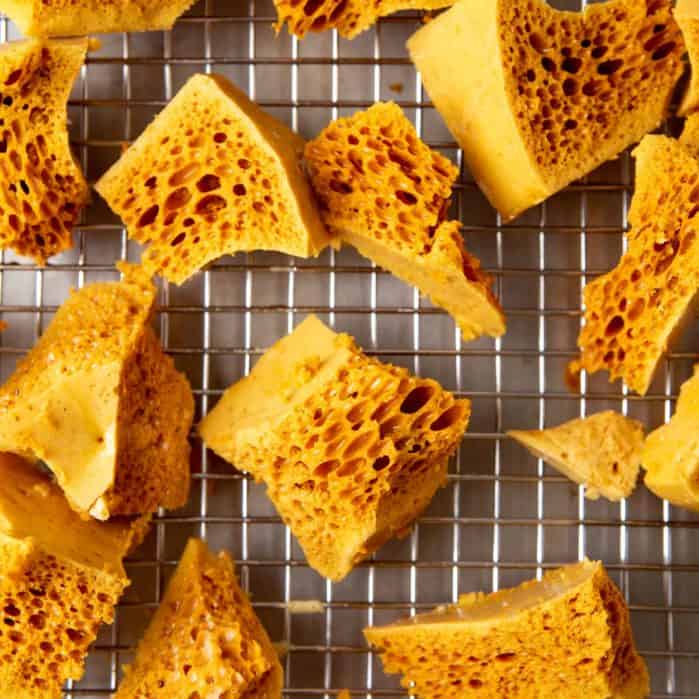
Leave a Review